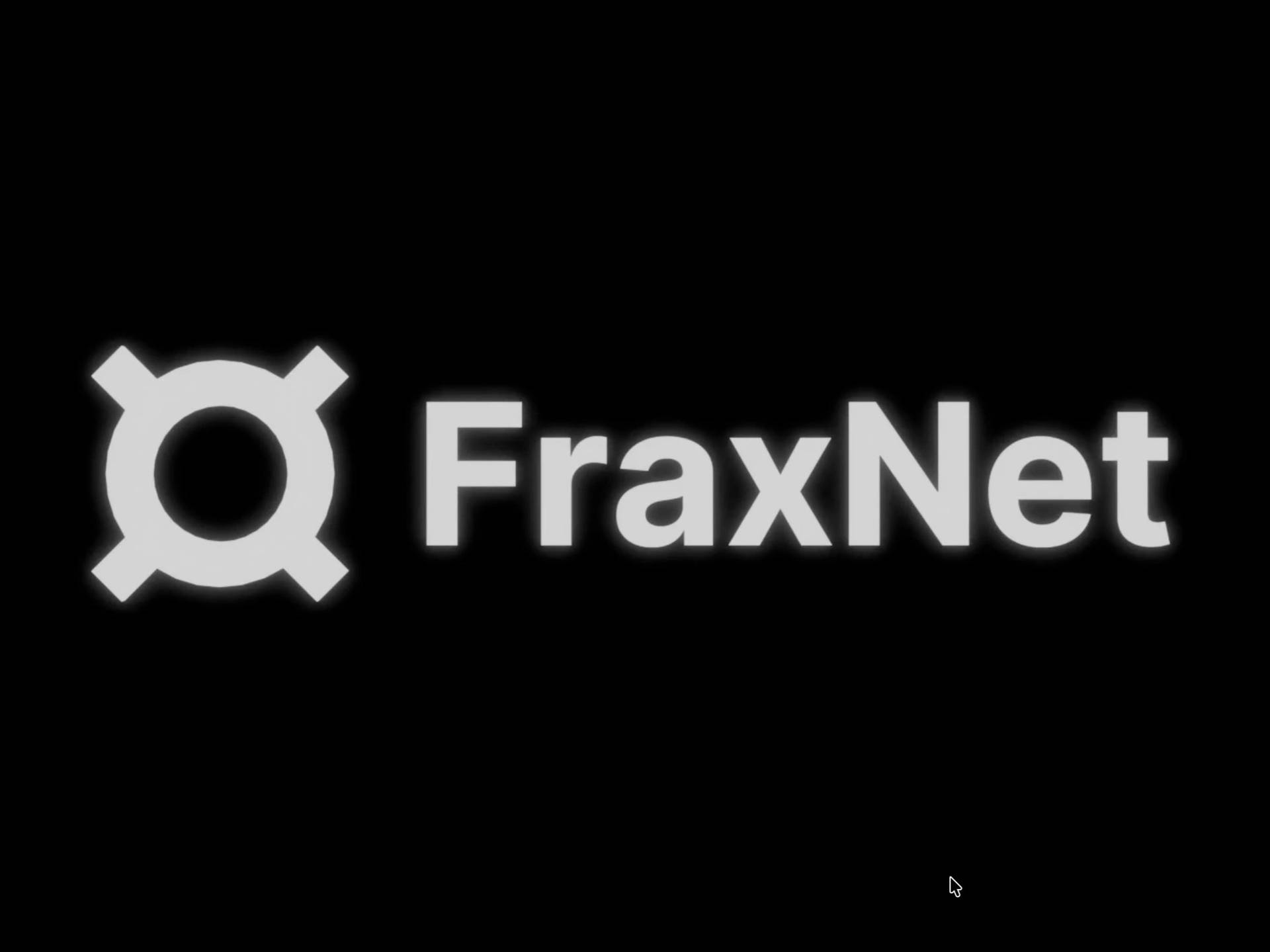订阅 wiki
Share wiki
Bookmark
FraxNet
FraxNet
FraxNet 是一个跨链互操作性层和 稳定币 网络,由 Frax Finance 开发,于2025年10月27日推出。它被设计为一个基于账户的平台,以促进 frxUSD 的原生铸造、赎回和收益获取,frxUSD 是一种完全由代币化的美国国债资产支持的 稳定币。 [5] [4] [2]
概述
FraxNet 作为一个协议原生的桥接解决方案,使 frxUSD 稳定币 能够在多个区块链生态系统中以规范的方式存在,而没有与传统托管或合成桥接相关的风险。该平台的核心目标是将去中心化金融 (DeFi) 与传统金融基础设施相结合,使用代币化的真实世界资产 (RWA),特别是美国国债,作为抵押品。这种方法旨在提供一种稳定的、产生收益的数字美元,个人用户和机构都可以访问。 [1]
该系统被呈现为一个“基于账户的平台”,为用户提供了一个统一的界面,用于管理他们在 20 多个受支持的区块链上的 frxUSD 持有量。主要功能包括以 1:1 的比例用批准的抵押品 铸造 frxUSD,将其兑换成美元或其他稳定币,并赚取来自底层国债资产的收益。FraxNet 还包含监管合规功能,并为经过验证的用户提供直接的法币下车通道,允许将 frxUSD 转换为美国银行账户中的法币。 [5] [4]
历史
Frax Finance 于 2025 年 10 月 1 日公开宣布了 FraxNet 平台,当时它开放了公开访问的候补名单。该公告将 FraxNet 描述为一个基于帐户的平台,用于跨多个链与其旗舰稳定币 frxUSD 进行交互。FraxNet 于 2025 年 10 月 27 日正式启动,关闭了候补名单,并向所有用户开放了在该平台上铸造、赎回 frxUSD 并赚取收益的功能。该网站的版权年份为 2025 年。[4] [5] [2]
技术
FraxNet的架构旨在确保其原生稳定币,frxUSD的安全高效的跨链操作,同时符合金融法规。
核心架构
FraxNet作为一个跨链互操作性层运行,避免了传统桥接解决方案的常见缺陷。它不创建资产在不同链上的“包装”或合成版本,而是促进在每个支持的网络上原生铸造和赎回frxUSD。这确保了每个frxUSD单元都是稳定币的规范且完全可替代的表示,可直接赎回并由相同的抵押品池支持。这种“协议原生”方法旨在消除与第三方桥接相关的托管风险和脱锚漏洞。 [1]
该平台利用已建立的跨链消息传递标准在区块链之间安全地通信。这允许价值和信息的最小信任转移,使用户无需依赖中心化中介即可在网络之间移动frxUSD。该系统还旨在将链上活动与链下金融系统连接起来,特别是通过其法币赎回功能。 [1]
跨链通信
为了实现其多链功能,FraxNet集成了已建立的跨链消息传递协议:
- LayerZero: 一种通用互操作性协议,可实现不同区块链之间的直接、无需信任的通信。FraxNet利用LayerZero作为其底层消息传递基础设施,以协调其支持网络之间的状态更改和资产转移。
- Circle的跨链传输协议(CCTP): 由Circle开发的无需许可的协议,用于在其链之间本地转移其USDC稳定币。FraxNet集成了CCTP以促进USDC的移动,USDC可用作铸造frxUSD的抵押品的组成部分。
这些标准化协议的使用使FraxNet能够将其范围扩展到新的区块链,而无需为每个区块链开发定制的桥接解决方案。 [1]
智能合约系统
FraxNet协议由一系列智能合约管理,这些合约负责管理其核心运营。官方文档概述了链上架构的几个关键组成部分:
- 代理架构: 采用标准的代理模式,允许随着时间的推移升级合约逻辑,而无需更改用户和其他协议与之交互的合约地址。
- FraxNet 存款工厂: 一个工厂合约,负责为用户创建新的、隔离的存款合约实例。
- FraxNet 存款: 一个合约,用于管理个人用户存款以及与协议的交互。
- RWA 赎回协调器: 一个专门的合约,用于协调将链上 frxUSD 赎回为其底层链下真实世界资产(如美国国债)的复杂过程。
- FraxNet 信标: 一个信标合约,与代理架构结合使用,以有效地管理多个代理实例的升级。
- FraxNet 托管人: 定义系统中各种托管人或受信任方的角色、权限和职责的合约。
这种模块化架构旨在实现协议功能的安全性、可升级性和透明管理。 [1]
监管一致性
FraxNet旨在符合金融法规。该平台的公告声明其frxUSD 稳定币是“按照GENIUS标准构建的”。根据该协议的文档,它旨在通过持有短期美国国债作为其合规稳定币的主要储备来符合GENIUS法案等法规。这种对监管合规性的关注延伸到其面向用户的功能,例如要求希望访问直接法币出口或参与收入分享的用户进行了解您的业务 (KYB) 和了解您的客户 (KYC) 验证。 [1] [4]
frxUSD 稳定币
frxUSD 稳定币 是 FraxNet 生态系统的核心资产,旨在通过代币化的真实世界资产的完全抵押来维持与美元挂钩的稳定价值。
抵押品和稳定机制
frxUSD 的稳定性源于其由代币化的美国国债资产储备支持。该协议将 稳定币 描述为“完全抵押”,这意味着储备中持有的资产价值旨在等于或大于流通中的 frxUSD 供应量。与算法稳定币或抵押不足的稳定币相比,这种 RWA 支持的模式旨在提供更高程度的稳定性和透明度。[5]
作为 抵押品 提及的具体代币化美国国债资产包括:
- Superstate 的 USTB: 一种代币化的美国国债债券基金。
- BlackRock 的 BUIDL: BlackRock USD Institutional Digital Liquidity Fund,一种代币化的货币市场基金。
- WisdomTree 的 WTGXX: 政府货币市场基金的代币化表示。
通过使用这些受监管的低风险金融工具作为支持,FraxNet 旨在确保 frxUSD 可以可靠地以其挂钩价格赎回。[5]
铸造和赎回
FraxNet提供了一个直接的机制来铸造和赎回frxUSD:
- 铸造: 用户可以通过将批准的抵押品存入FraxNet智能合约系统,以1:1的比例创建新的frxUSD。接受的抵押品包括其他主要的稳定币,如USDC和USDT,以及批准的代币化美国国债资产。
- 赎回: frxUSD的持有者可以以1:1的比例将稳定币赎回为美元或其他稳定币,如USDC。对于已完成必要合规性检查的已验证用户,FraxNet提供直接的法币退出通道,允许frxUSD通过ACH或电汇直接赎回到关联的美国银行账户。
特性和用例
FraxNet提供一系列围绕其多链稳定币的功能,目标用户包括DeFi用户和机构。
平台功能
- 有竞争力的收益率: 该平台允许frxUSD的持有者赚取收益,收益来自储备中持有的美国国债资产。推广网站声明年度百分比收益率(APY)为4.10%。 [5]
- 收入分享: 完成KYB/KYC程序的验证用户可以参与收入分享计划,赚取协议储备金产生的部分收益。 [1]
- 多链功能: frxUSD被设计为跨多个区块链的原生资产,无需第三方桥梁及其相关费用和风险。 [5]
- 安全性和合规性: 该平台以“企业级安全和合规”为基础构建,反映了其专注于吸引机构用户并遵守金融法规。 [5]
支持的区块链
FraxNet 旨在跨广泛的区块链网络运行。官方支持的链包括:
- Abstract
- Arbitrum
- Aurora
- Avalanche
- Base
- Berachain
- BNB 智能链
- 以太坊
- Fraxtal
- Ink
- Katana
- Linea
- Mode
- Optimism
- Plume
- Polygon
- Polygon zkEVM
- Scroll
- Sei
- Solana
- Sonic
- Unichain
- X Layer
- ZKsync Era
这种广泛的支持突显了该平台的目标,即让 frxUSD 成为更广泛的数字资产生态系统中无处不在的稳定币。 [5]
使用案例
frxUSD 稳定币和 FraxNet 平台定位于加密经济中的几个关键应用:
- 加密交易: 作为去中心化交易所 (DEX)(如 Uniswap、Curve 和 Balancer)上的稳定交易对。 它的稳定性使其成为交易波动性更大的加密货币的可靠报价资产。
- 流动性提供和收益耕作: 用户可以将 frxUSD 存入各种 DeFi 协议上的流动性池中,以赚取交易费用和其他奖励。
- 价值保存: 稳定币旨在充当避风港资产,使投资者能够在市场高度波动期间保持其购买力。
该平台强调 以太坊、Polygon 和 Arbitrum 是这些交易和 DeFi 用例的特别流行的网络。 [5]
未来发展
FraxNet官方网站列出了几个“即将推出”的功能,表明计划扩展其服务,以进一步桥接数字资产和传统金融之间的差距:
- 可消费卡: 开发虚拟和实体Visa卡,允许用户在支持的商家直接消费他们的frxUSD持有量。
- 虚拟银行账户: 引入法币存款地址,自动将传统银行账户的入账资金转换为frxUSD。
- 白标稳定币: 一项服务,使其他项目和机构能够使用frxUSD及其底层RWA抵押品作为储备资产,推出他们自己的品牌稳定币。
这些计划中的功能旨在提高frxUSD作为交换媒介和其它金融产品的基础层的实用性和采用率。 [5]
生态系统与合作伙伴
FraxNet的运营依赖于技术提供商和成熟的金融机构网络的支持,这些机构为其基础设施和抵押品 基础做出了贡献。
技术合作伙伴
- LayerZero: 提供核心的跨链消息传递协议,该协议是FraxNet互操作性的基础。
- Circle: 其跨链传输协议(CCTP)的集成促进了USDC的本地转移,USDC是一种关键的抵押品资产。 [1]
机构联系
该平台依赖代币化的美国国债作为抵押品,因此需要与参与资产管理和代币化的领先金融机构建立联系。该项目列出了几个机构作为其生态系统的一部分:
- 资产管理公司/发行人: 贝莱德、Superstate和WisdomTree是BUIDL、USTB和WTGXX代币化国债产品的发行方,这些产品被用作抵押品。
- 其他金融机构: Securitize、Stripe、Bridge和Lead Bank也被提及,可能在资产代币化、支付处理和银行业务方面发挥作用,将FraxNet协议与传统金融系统连接起来。 [5]
发现错误了吗?
